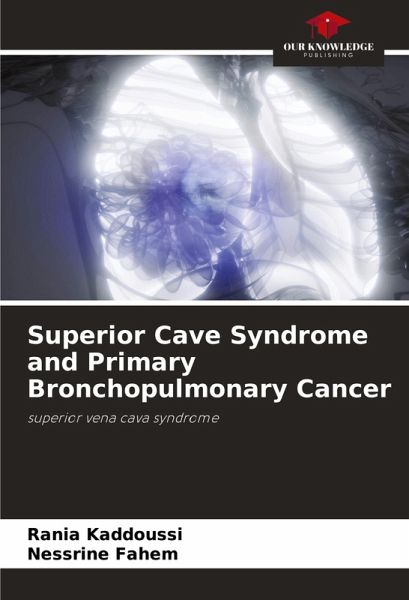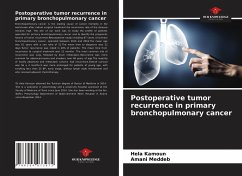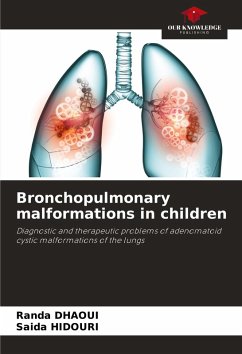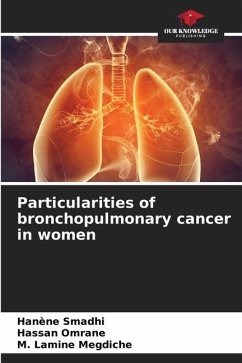
Superior Cave Syndrome and Primary Bronchopulmonary Cancer
superior vena cava syndrome
Versandkostenfrei!
Versandfertig in 6-10 Tagen
29,99 €
inkl. MwSt.

PAYBACK Punkte
15 °P sammeln!
Bronchopulmonary cancer (PBC) is the leading cause of superior cell carcinoma (SCC). This study aims to establish a clinical, radiological and evolutionary profile of SCS associated with PBC, to examine therapeutic management modalities, and to evaluate survival while identifying and analyzing prognostic factors.This is a retrospective study of patients followed for SCS secondary to primary bronchopulmonary cancer. In 41.7% of cases, SCS was the first presenting sign of the neoplasia, while 16.6% presented with SCS metachronously. The histological type most frequently associated with SCS was s...
Bronchopulmonary cancer (PBC) is the leading cause of superior cell carcinoma (SCC). This study aims to establish a clinical, radiological and evolutionary profile of SCS associated with PBC, to examine therapeutic management modalities, and to evaluate survival while identifying and analyzing prognostic factors.This is a retrospective study of patients followed for SCS secondary to primary bronchopulmonary cancer. In 41.7% of cases, SCS was the first presenting sign of the neoplasia, while 16.6% presented with SCS metachronously. The histological type most frequently associated with SCS was small-cell lung carcinoma (40.7%).Contrast-enhanced thoracic computed tomography (CT) is the key examination for the diagnosis of SCS. The most common CT finding was tumor invasion of the superior vena cava (62.2%). Short-term prognosis depends on the consequences of cerebral and laryngeal edema and associated complications, while long-term prognosis is mainly influenced by the underlying etiology.














